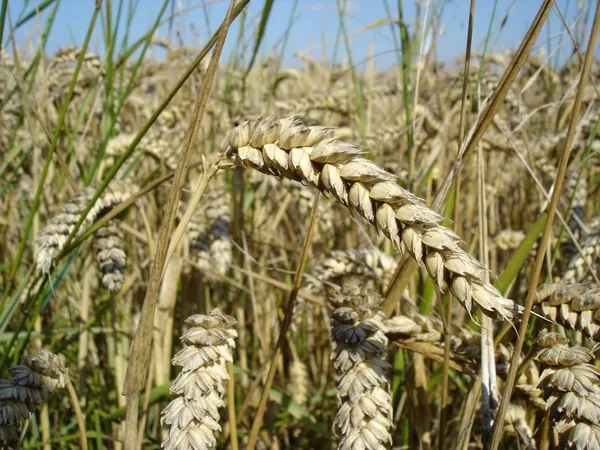
Revolutionary Discovery in Wheat Genetics: TaNF-Y Complex Could Be the Key to Maximizing Yield and Quality!
2024-09-27
Author: Amelia
Introduction
In a groundbreaking study, scientists have unveiled the vital role of the trimer complex known as TaNF-Y in wheat (Triticum aestivum L.), a crop crucial for global food security. Breeding strategies have historically concentrated on enhancing both grain yield and quality—a delicate balancing act, as grain starch content and seed storage protein (SSP) composition are fundamental components in determining these attributes.
The Challenge of Balancing Yield and Quality
The challenge lies in the negative correlation typically observed between SSP content, which defines the quality of flour, and starch content, which impacts grain weight and overall yield. However, thanks to recent research led by Professor Xiao Jun's team at the Institute of Genetics and Developmental Biology of the Chinese Academy of Sciences, hope is on the horizon.
Groundbreaking Research Findings
Published online on September 18, 2024, in the prestigious journal *The Plant Cell*, this study titled 'NUCLEAR FACTOR-Y-POLYCOMB REPRESSIVE COMPLEX2 dynamically orchestrates starch and seed storage protein biosynthesis in wheat' outlines the mechanisms through which TaNF-Y exerts its influence on wheat development.
Understanding TaNF-Y's Role
Previously, research spotlighted the transcriptional regulation of both SSP-encoding and starch biosynthetic enzyme-encoding genes. Yet there remained a significant gap in understanding how transcription factors effectively regulate both types of accumulation and maintain a balance between grain quality and yield. The findings reveal that the trimer complex TaNF-Y, composed of the subunits TaNF-YA3-D, TaNF-YB7-B, and TaNF-YC6-B, plays a crucial role in this process.
Experimental Insights
Professor Xiao indicated, 'In our experiments, we observed a remarkable decrease in starch content alongside a significant increase in storage protein content upon silencing the TaNF-YA3 and TaNF-YC6 genes with RNAi interference technology.' This highlights TaNF-Y's potential as a genetic target for crop improvement.
Mechanisms of Interaction with PRC2
The research further reveals that the TaNF-Y trimer complex interacts with the Polycomb Repressive Complex 2 (PRC2), influencing epigenetic modifications. By altering histone H3K27me3, TaNF-Y inhibits the transcription of key SSP-encoding genes, such as TaLMW-400 and TaGli-γ-700, while also acting on the negative regulator of starch-encoding genes, TaNAC019. This dual regulatory pathway not only governs SSP synthesis but also plays an indirect role in starch accumulation, underscoring the complexity of genetic regulation in wheat.
Conclusion and Future Directions
With these findings, the potential for a new frontier in wheat breeding opens up—one that could lead to varieties with improved yields and quality, which is critical for feeding an ever-growing global population. Researchers encourage further exploration of TaNF-Y as a target for genetic engineering, promising a revolution in sustainable agriculture.
Stay Tuned!
Stay tuned for more updates on how this discovery could shape the future of crop production!









 Brasil (PT)
Brasil (PT)
 Canada (EN)
Canada (EN)
 Chile (ES)
Chile (ES)
 Česko (CS)
Česko (CS)
 대한민국 (KO)
대한민국 (KO)
 España (ES)
España (ES)
 France (FR)
France (FR)
 Hong Kong (EN)
Hong Kong (EN)
 Italia (IT)
Italia (IT)
 日本 (JA)
日本 (JA)
 Magyarország (HU)
Magyarország (HU)
 Norge (NO)
Norge (NO)
 Polska (PL)
Polska (PL)
 Schweiz (DE)
Schweiz (DE)
 Singapore (EN)
Singapore (EN)
 Sverige (SV)
Sverige (SV)
 Suomi (FI)
Suomi (FI)
 Türkiye (TR)
Türkiye (TR)
 الإمارات العربية المتحدة (AR)
الإمارات العربية المتحدة (AR)